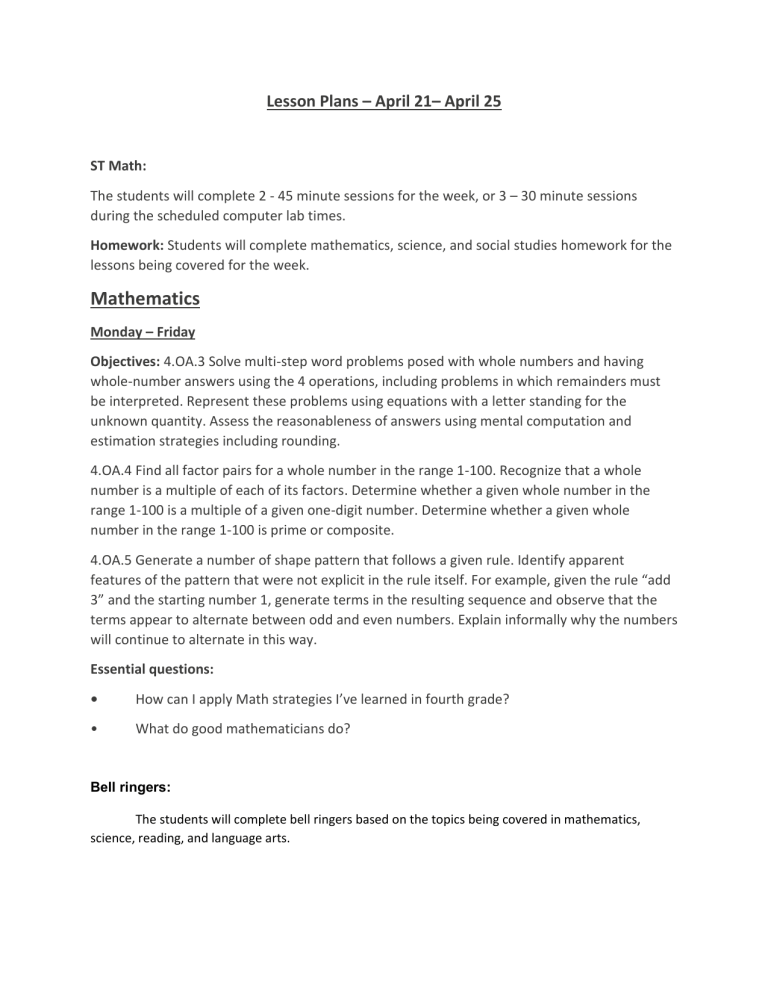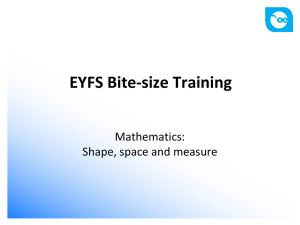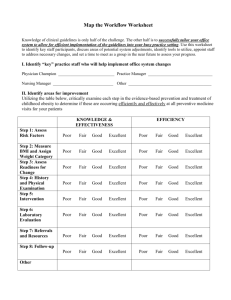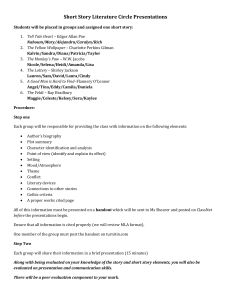Lesson Plans April 21 - 25

Lesson Plans – April 21– April 25
ST Math:
The students will complete 2 - 45 minute sessions for the week, or 3 – 30 minute sessions during the scheduled computer lab times.
Homework: Students will complete mathematics, science, and social studies homework for the lessons being covered for the week.
Mathematics
Monday – Friday
Objectives: 4.OA.3 Solve multi-step word problems posed with whole numbers and having whole-number answers using the 4 operations, including problems in which remainders must be interpreted. Represent these problems using equations with a letter standing for the unknown quantity. Assess the reasonableness of answers using mental computation and estimation strategies including rounding.
4.OA.4 Find all factor pairs for a whole number in the range 1-100. Recognize that a whole number is a multiple of each of its factors. Determine whether a given whole number in the range 1-100 is a multiple of a given one-digit number. Determine whether a given whole number in the range 1-100 is prime or composite.
4.OA.5 Generate a number of shape pattern that follows a given rule. Identify apparent features of the pattern that were not explicit in the rule itself. For example, given the rule “add
3” and the starting number 1, generate terms in the resulting sequence and observe that the terms appear to alternate between odd and even numbers. Explain informally why the numbers will continue to alternate in this way.
Essential questions:
• How can I apply Math strategies I’ve learned in fourth grade?
• What do good mathematicians do?
Bell ringers:
The students will complete bell ringers based on the topics being covered in mathematics, science, reading, and language arts.
Anticipatory Set:
The teacher will review with the students the previously learned mathematics topic. The teacher will then introduce the students to the new topic being covered. The teacher and students will listen to and answer the Essential Questions for the week’s lessons.
Teacher Input:
The students will take notes based on the video or PowerPoint of the lesson being covered. The lessons will include:
Multi-step word problems with the RICE method, pictures, line graphs, and graphs (TESTED THIS WEEK)
Prime numbers and Composite numbers
Number Patterns
The students will complete a review of 4 th Grade Mathematics topics included on the DCE exam.
Guided Practice:
The students and teacher will complete problems together from a practice worksheet.
Multi-Step Word problems with the RICE method, pictures, line graphs, and graphs
Prime Numbers and Composite Numbers
Number Patterns
Independent practice:
The students will independently complete a handout for student understanding of the lessons covered for the week.
Multi-Step Word problems with the RICE method, pictures, line graphs, and graphs
Prime Numbers and Composite Numbers
Number Patterns
The students will complete a review packet of the topics being covered on the 4 th grade DCE exam.
The students will take the 2 nd 4 th 9 week exam covering multi-step word problems.
Enrichment: Early Finishers will be working on an additional activity related to the mathematics topics being covered.
Differentiation: Students will be arranged in the classroom in cooperative learning groups/elbow buddies. The groups will include students of varying skill levels, Low to Moderately Low, Medium to
Proficient, and Upper Proficient to Advanced. The teacher will work with each group/student individually making sure the students are understanding the material being covered for the week.
Assessment: Observation, and Independent practice handouts, Homework
Closure: The teacher will have students identify something that they feel that they still don’t understand from the lessons covered each day.
Materials: Bell ringers, handouts, notebook/binder, Pencil
Science
Monday – Friday
Objective:
Essential Questions:
How can I apply Science strategies I’ve learned in fourth grade?
What do good scientists do?
Anticipatory Set: The students will watch Bill Nye the Science Guy on Types of Rocks and Soil. https://www.youtube.com/watch?v=BpXR-z47G8o
Teacher Input:
The teacher will review the things that were important throughout the video. The teacher will then show a PowerPoint on the 3 types of rocks. The students will complete a handout on the types of rocks.
Guided Practice: The students will listen to the video learning about the different types of rocks.
The teacher and students will have a discussion on the video that was watched.
The students and teacher will popcorn read the Science weekly newspaper on rocks.
Independent Practice: The students will complete a handout on types of rocks.
The students will complete handout packet on rocks from the Science Weekly newspaper.
Assessment: Rocks handout, and Science Weekly Newspaper handout packet.
Closure: The students will share something they have learned from the video or reading on the different types of rocks.
Materials: textbook, handouts, Bill Nye Video
Social Studies
Objective:
6. Understand diversity in Mississippi. b. Identify the Mississippi artists, musicians, and writers who have an impact on state, nation, and world.
Essential Questions:
Who are Mississippi artists, writers, and musicians who have had an impact on the state, nation, and world?
Anticipatory Set:
The students will watch a video of the book, The Secret Life of Walter Anderson by Hester Bass. https://www.youtube.com/watch?v=pxmehXLO8Ag
Teacher Input:
The students will watch the video and have a brief discussion about the incredible Walter
Anderson, a MS artist.
Guided Practice/Independent Practice: The students and teacher will complete a worksheet on the video on Walter Anderson. The teacher will collect for a grade.
Assessment: Handout on Walter Anderson
Closure: The students will write down one important detail that they learned about Walter
Anderson.
Materials: Handout, and video on Walter Anderson.







